Discover Georgian Cuisine and Fermentation with Otemori Aki
Sep 16,2021
Discover Georgian Cuisine and Fermentation with Otemori Aki
Sep 16,2021
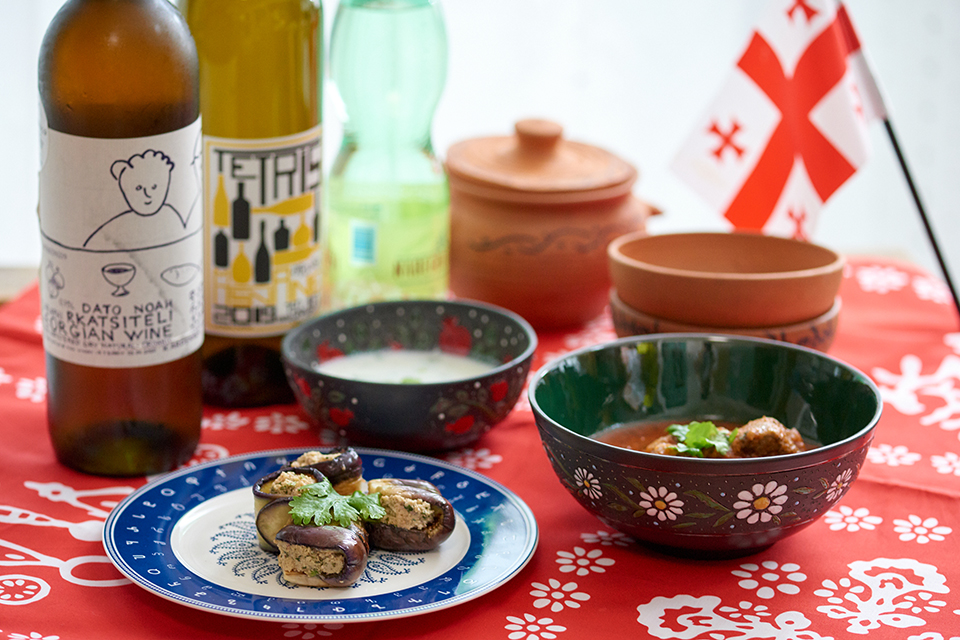

Georgia, a small country located between the Black and Caspian Seas, sits at the boundary between Europe and Asia. While most Japanese tourists never get there, one person fascinated by its culinary culture is Otemori Aki — so much so that she’s now a Georgian food expert. Ever since her first serendipitous trip to the country, she’s been sharing its magic through food.
Here Aki tells us all about Georgian home cooking, of which fermented products like cheese and wine are an integral part.
Aki first visited Georgia in 2019. The story begins when she was planning a journey along the Silk Road to celebrate her daughter’s university graduation. They intended to feast on their favorite food, dumplings, throughout the trip.
Aki was a career woman working at a financial services firm at the time. Convinced that this would be her only chance to take a leisurely trip with her daughter, she asked her employer for an extended vacation. They refused. Undaunted, she quit, and the pair set out on their journey.
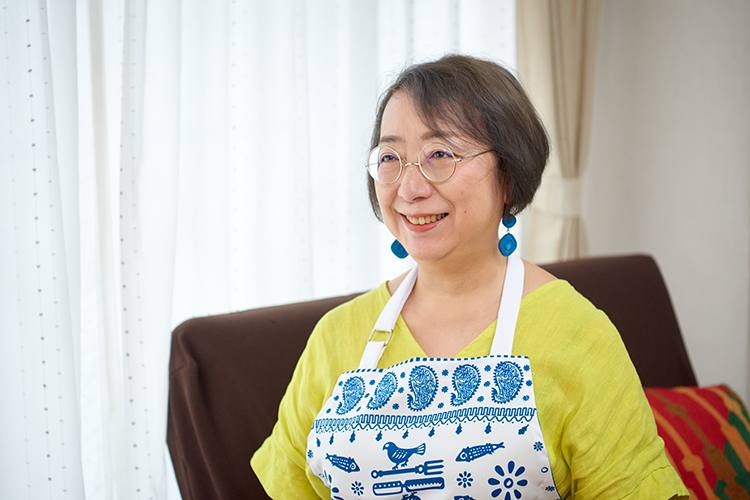
Georgian food expert Otemori Aki
“I was reading up on the world’s dumplings when I came across an article about how Georgian khinkali was the king of dumplings. I just had to try them, so we decided to make Georgia our final destination, though I knew virtually nothing about the place. We traveled from Xian, China, via Urumqi in the Xinjiang Uyghur Autonomous Region to Georgia, enjoying the local food along the way.”
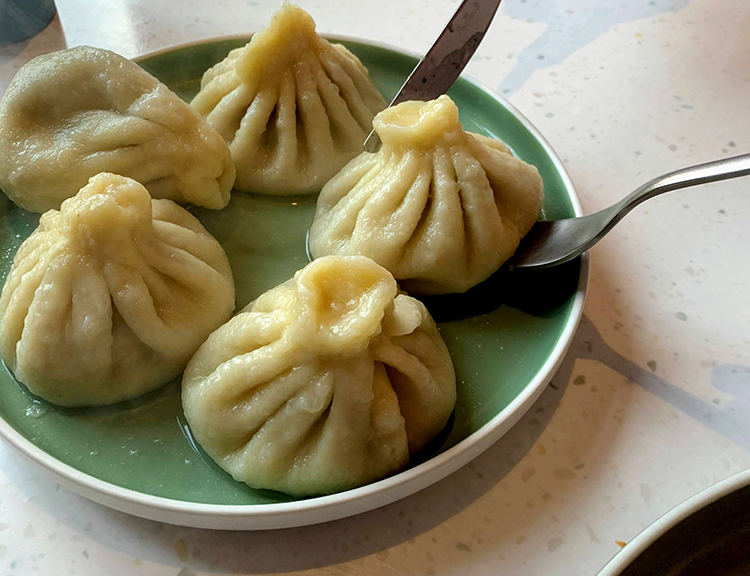
Khinkali dumplings. They’re huge!
On arriving in Georgia, Aki and her daughter got to know a local who ran a cooking school in the capital, Tbilisi, and arranged to take private lessons with a Georgian chef. Aki was enchanted by everything about the country — its multitude of dishes packed with herbs and spices, its wine produced in a distinctive vessel called a kvevri, its cities and friendly people.
“In Soviet times, Georgian cuisine was the ultimate treat. While it doesn’t look fancy, it possesses a subtle, complex flavor. That’s the beauty of it. I fell deeper and deeper in love with Georgia, starting with its food.”
Georgian cuisine is characterized by its simple flavoring, which plays up the ingredients. Basically, it features just salt and, rarely, vinegar. Spices and herbs bring out the deeper flavor.
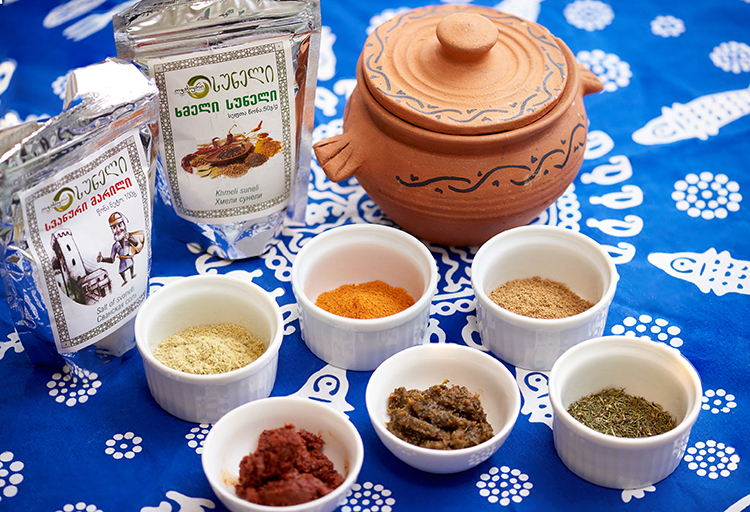
Front row, from left: Red ajika, green ajika, kondari (summer savory).
Middle row, from left: Utskho suneli (blue fenugreek), marigold, kinzi (coriander).
The two packages behind at the left are svaneti salt and khmeli suneli, a mixture of spices and herbs.
Typical Georgian spices include kinzi (coriander), utskho suneli (the herbaceous plant blue fenugreek), and kondari (summer savory). Supermarkets in the capital Tbilisi sell packaged mixtures of these spices, while markets offer a wide assortment of spices and herbs such as cumin, nutmeg, caraway, and kviteli kvavili (marigold).
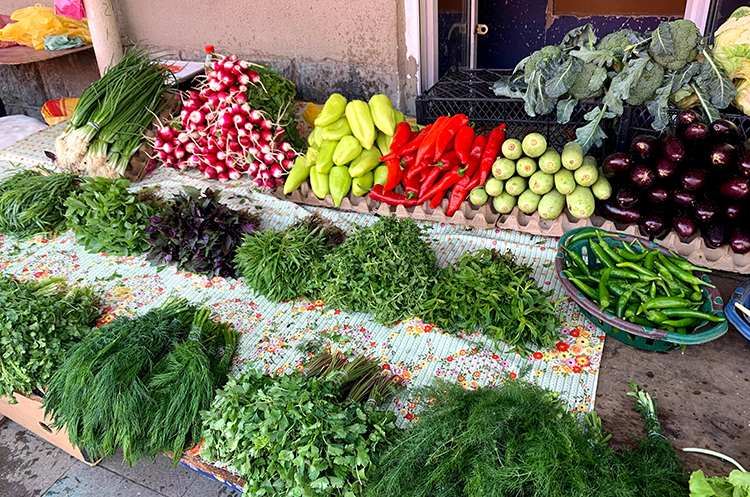
“The spring herb tarragon, for instance, is served as is with bread and cheese on a plate or made into lemonade or panna cotta sauce. There’s even a baked pastry with a rice and tarragon filling. It’s amazing how many different uses spices have in Georgian cooking.”
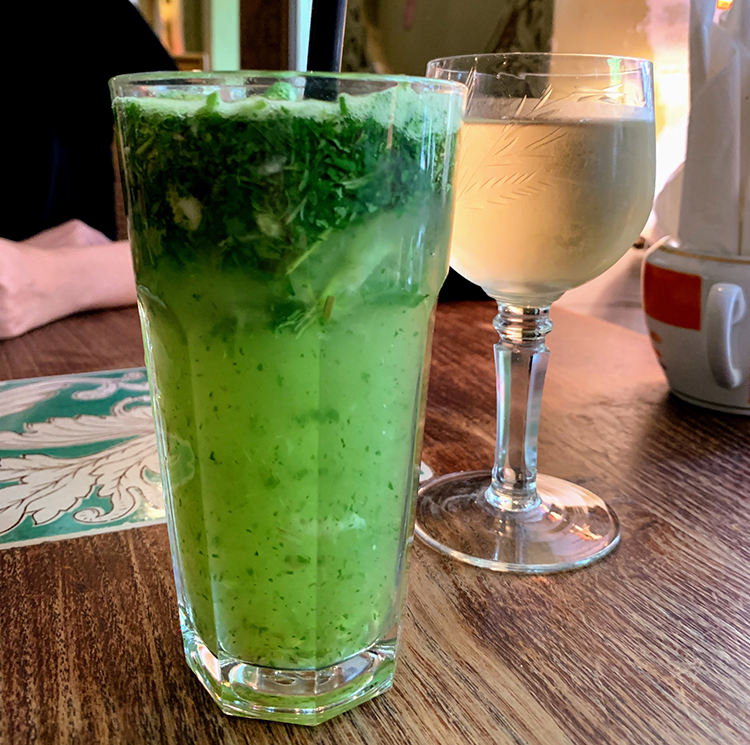
Tarragon lemonade
Condiments made by boiling down spices, herbs, or vegetables are indispensable to Georgian cuisine — particularly red ajika, which is made with red chili peppers, and green ajika, which is made with green chili peppers. These two all-purpose sauces go with just about anything.
Each household produces its own sauces and preserves from seasonal herbs and fruits and stores them in a shed. This seasonal routine has much in common with how ume fruit is used to make drinks and preserves in Japan.
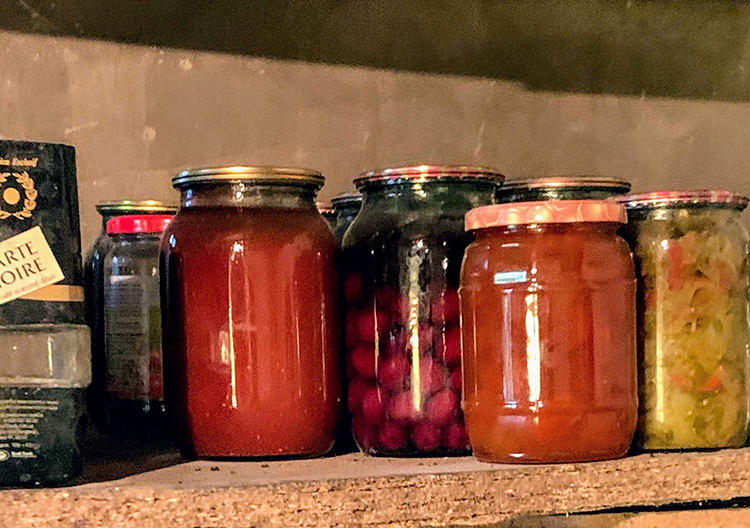
The most typical Georgian fermented products are wine and cheese. Households in Georgia are allowed to make their own wine, and individuals are free to sell it. Hence wine is consumed in prodigious amounts.
Cheese, which pairs so well with wine, also appears all the time on the dining table. It comes in many different varieties. In outlying regions, it’s not usual to see handcrafted cheese being sold at the roadside.
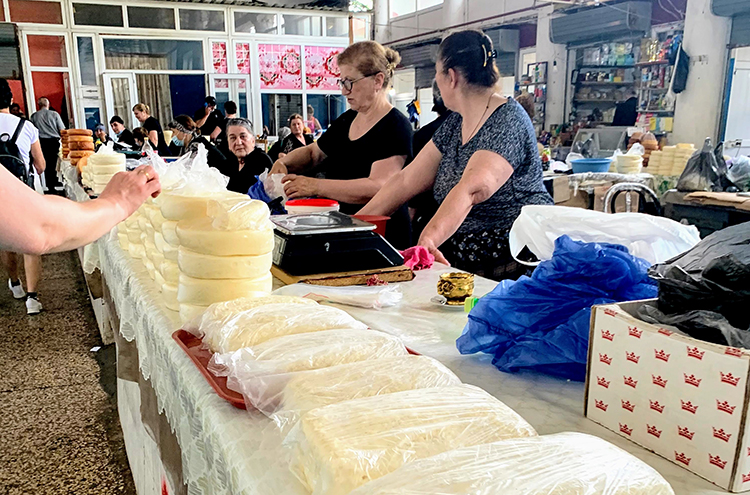
Georgians always feel cheese to check its texture before buying.
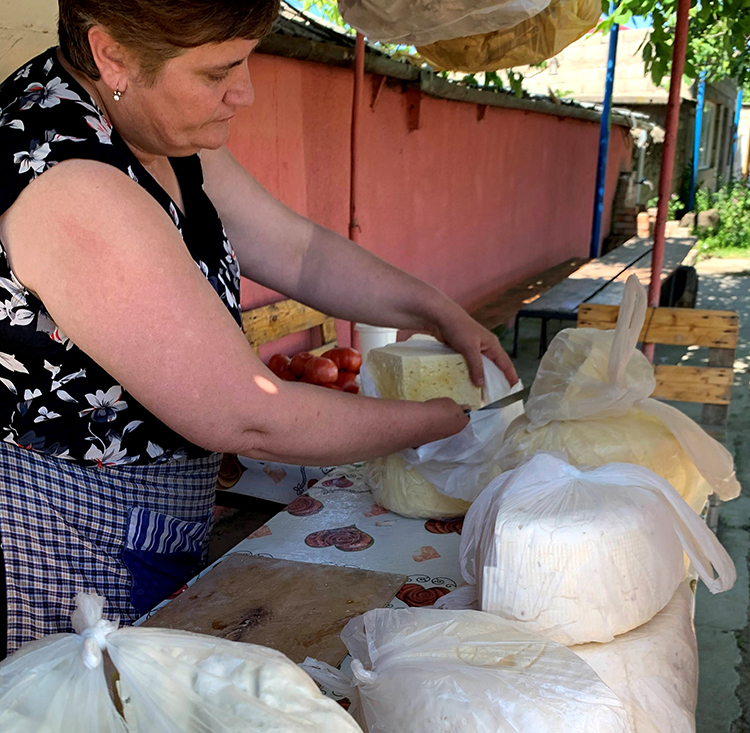
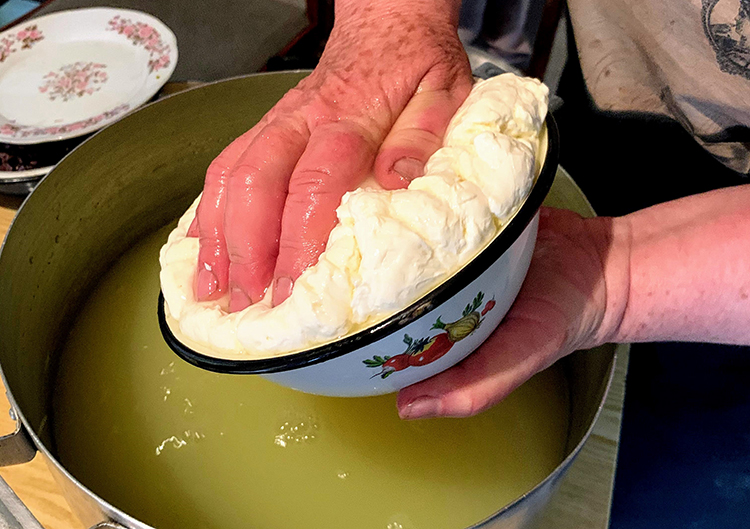
Homemade cheese. The leftover whey is used for cooking.
“Khachapuri, Georgia’s national dish, is made with oodles of cheese. It consists of bread filled with cheese cut into slabs thicker than you could imagine back in Japan. It’s often served for breakfast with cucumber and tomato salad. It’s also commonly eaten with cottage cheese and homemade jam or honey.”

Khachapuri. Oodles of cheese are standard!
Khacho means cheese and puri means bread. Khachapuri comes in various forms, and what they all have in common is that they’re filled with cheese and baked in the oven. A boat-shaped khachapuri with cheese and butter filling and topped with an egg suggestive of the setting sun is popular with tourists in the Adjara region. That’s the only part of the country where you can watch the sun set over the sea, as Georgia is mostly landlocked.
One everyday Georgian dish, shkmeruli, went viral in Japan when a major beef bowl chain and a convenience store started offering it. This version of the dish, however, featured cheese. Authentic Georgian shkmeruli isn’t made with cheese.
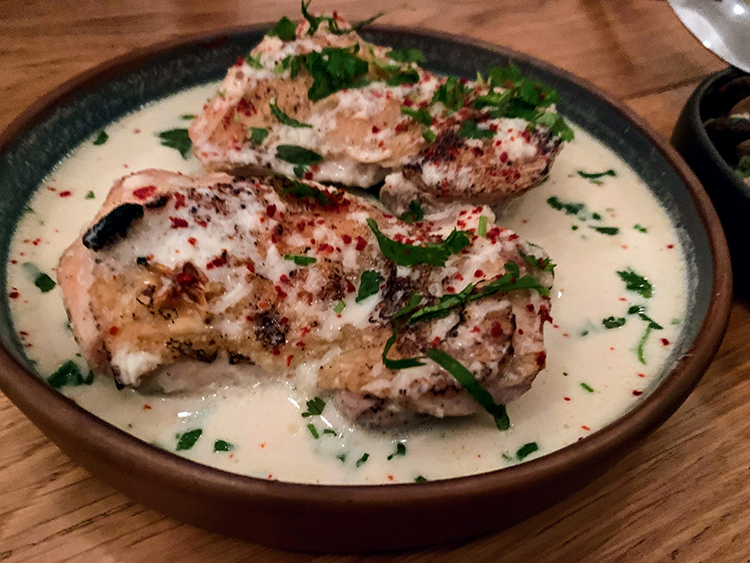
Authentic shkmeruli as served in a restaurant in Georgia
“It’s made by roasting a whole chicken, then simmering it in water with plenty of garlic and salt. Basically that’s it, though spices may be added. It’s served on an unglazed handmade dish, which is charming in its artlessness.”
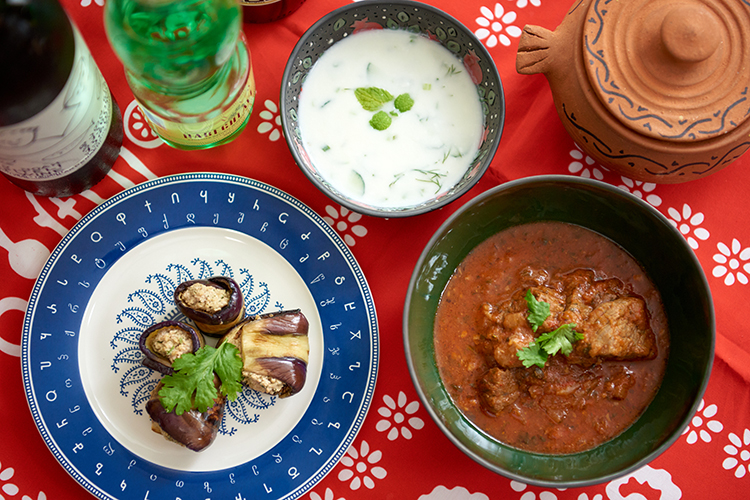
“What makes Georgian food so interesting is this,” explains Aki. “Each dish bursts with the flavor of the ingredients, even though spices, herbs, and salt are virtually the only flavorings used.” She made us three classic Georgian dishes.
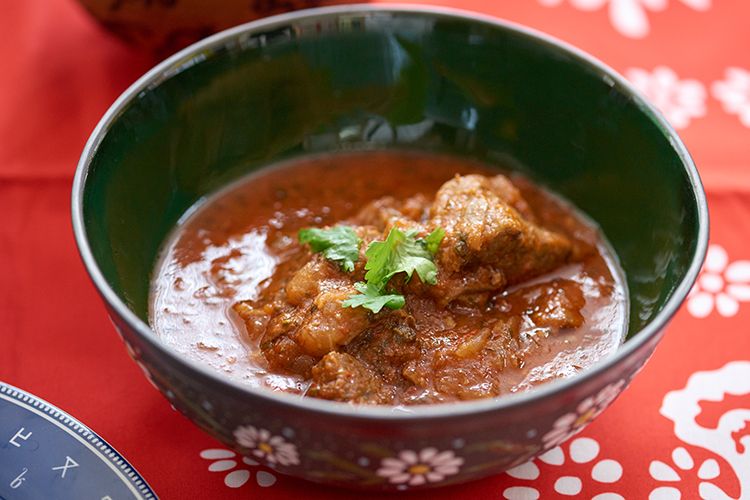
Ostri is a traditional Georgian dish similar to beef stew. It’s prepared by simmering beef until it’s tender, along with ingredients like tomatoes, garlic, and onions. The condiment ajika, which is made with chili peppers and coriander and other spices, is added as well. Herbs give the flavor depth, which suits the Japanese palate to a tee. This stew also tastes delicious sopped up with bread.
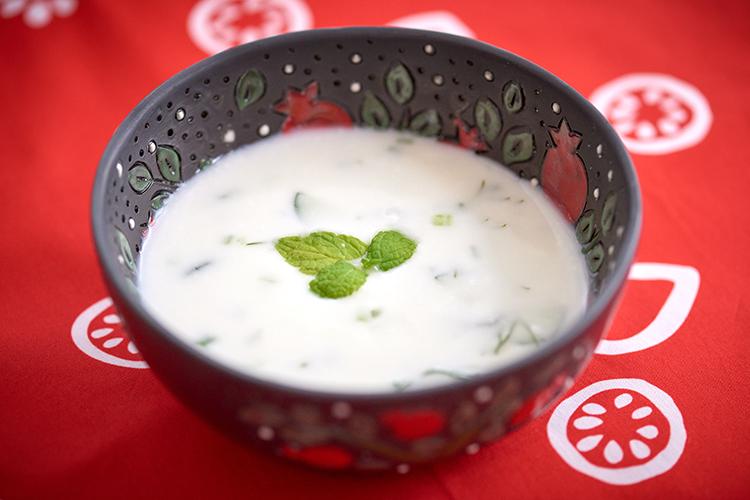
The matsoni in matsoni soup means Georgian yogurt. Many Georgian families make their own yogurt as well as cheese. Yogurt isn’t just consumed as is; it’s also commonly used in cooking. Cold yogurt soup is eaten daily in Georgia, much as miso soup is in Japan.
Matsoni soup is made with matsoni, water, salt, cucumbers, green chili peppers, and herbs such as dill and mint. It has a refreshing taste with little sourness. You could keep eating it forever.
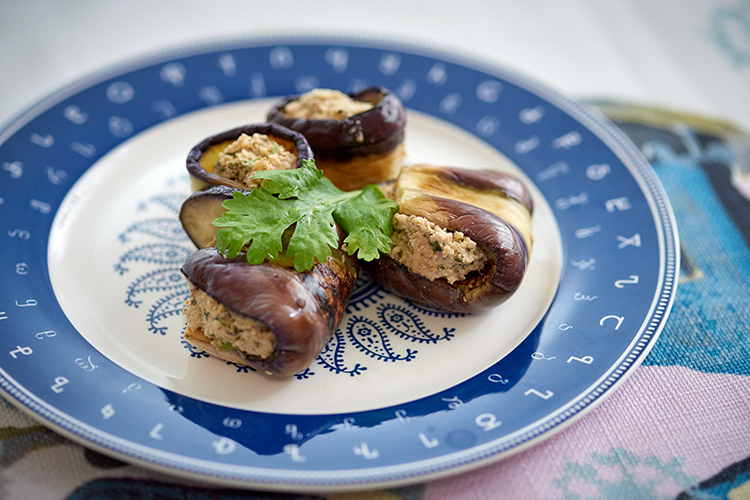
Besides herbs, vegetables, spices, and fruits, walnuts also feature prominently in Georgian cuisine. This appetizer is another widely eaten dish. It’s made by adding kinzi (coriander), utskho suneli (blue fenugreek), water, and salt to walnuts, puréeing them, and then stuffing fried eggplant cut into 7-8 mm slices with the resulting paste.
When you take a bite, the flavor of walnuts and spices fills your mouth. Amazingly, the paste is no less juicy than the sautéed eggplant. While this dish resembles Japanese fried eggplants stuffed with ground meat, its distinctive aroma and rich flavor are quintessentially Georgian.
Aki set out on her trip without any idea of what she would do on getting back to Japan. She immersed herself in Georgian culture. When she arrived home, a slew of messages awaited her from people who had seen her social media posts from her stay in Georgia. They wanted to learn how to make Georgian cuisine.
“I showcase Georgia’s food culture by holding cooking classes and events. I give online talks where I describe my travels in Georgia so far while showing my photos. Through these and other activities, I try to get people interested in Georgia’s different regions with their lush natural surroundings, its beautiful cityscapes, and its hospital people, who’ll happily treat tourists to a meal. I’m eager to share my love of Georgia with others.”

Georgian food expert
Georgian food expert
Otemori Aki embarked on a culinary career after being captivated by Georgia’s food culture on a visit to the country. She holds Georgian cooking classes and culinary events, as well as working with the Georgian Embassy in Tokyo advising restaurants that serve genuine Georgian food.